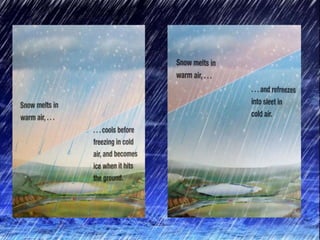Cooperlative learning - Mr.Aphithak
- 2. ÓĖüÓĖ▓ÓĖŻÓ╣ĆÓĖŻÓĖĄÓĖóÓĖÖÓĖüÓĖ▓ÓĖŻÓĖ¬ÓĖŁÓĖÖÓ╣üÓĖÜÓĖÜ GI ( Group Investigation) GI (Group Investigation) ÓĖ×ÓĖ▒ÓĖÆÓĖÖÓĖ▓Ó╣éÓĖöÓĖó Sharan Ó╣üÓĖźÓĖ░ÓĖäÓĖōÓĖ░ Ó╣ĆÓĖøÓ╣ćÓĖÖ ÓĖŻÓĖ╣ÓĖøÓ╣üÓĖÜÓĖÜÓĖüÓĖ▓ÓĖŻÓ╣ĆÓĖŻÓĖĄÓĖóÓĖÖÓ╣üÓĖÜÓĖÜÓĖŻÓ╣łÓĖ¦ÓĖĪÓĖĪÓĖĘÓĖŁÓĖŚÓĖĄÓ╣łÓĖĪÓĖĄÓĖäÓĖ¦ÓĖ▓ÓĖĪÓĖŗÓĖ▒ÓĖÜÓĖŗÓ╣ēÓĖŁÓĖÖÓ╣üÓĖźÓĖ░ÓĖüÓĖ¦Ó╣ēÓĖ▓ÓĖćÓĖĪÓĖ▓ÓĖü ÓĖøÓĖŻÓĖ▒ÓĖŖÓĖŹÓĖ▓ÓĖéÓĖŁÓĖćÓĖŻÓĖ╣ÓĖøÓ╣üÓĖÜÓĖÜ GI ÓĖüÓ╣ćÓĖäÓĖĘÓĖŁÓĖĢÓ╣ēÓĖŁÓĖćÓĖüÓĖ▓ÓĖŻÓĖøÓĖźÓĖ╣ÓĖüÓĖØÓĖ▒ÓĖćÓĖüÓĖ▓ÓĖŻÓĖŻÓ╣łÓĖ¦ÓĖĪÓĖĪÓĖĘÓĖŁÓĖüÓĖ▒ÓĖÖ ÓĖŁÓĖóÓ╣łÓĖ▓ÓĖćÓĖĪÓĖĄÓĖøÓĖŻÓĖ░ÓĖŖÓĖ▓ÓĖśÓĖ┤ÓĖøÓ╣äÓĖĢÓĖó ÓĖĪÓĖĄÓĖüÓĖ▓ÓĖŻÓĖüÓĖŻÓĖ░ÓĖłÓĖ▓ÓĖóÓĖĀÓĖ▓ÓĖŻÓĖ░ÓĖćÓĖ▓ÓĖÖÓ╣üÓĖźÓĖ░ÓĖ¬ÓĖ┤ÓĖŚÓĖśÓĖ┤Ó╣āÓĖÖÓĖüÓĖ▓ÓĖŻ Ó╣üÓĖ¬ÓĖöÓĖćÓĖäÓĖ¦ÓĖ▓ÓĖĪÓĖäÓĖ┤ÓĖöÓ╣ĆÓĖ½Ó╣ćÓĖÖÓĖŚÓĖĄÓ╣łÓ╣ĆÓĖŚÓ╣łÓĖ▓Ó╣ĆÓĖŚÓĖĄÓĖóÓĖĪÓĖüÓĖ▒ÓĖÖÓĖéÓĖŁÓĖćÓĖ¬ÓĖĪÓĖ▓ÓĖŖÓĖ┤ÓĖüÓ╣āÓĖÖÓĖüÓĖźÓĖĖÓ╣łÓĖĪ GI ÓĖĪÓĖĄÓĖüÓĖ▓ÓĖŻ ÓĖüÓĖŻÓĖ░ÓĖĢÓĖĖÓ╣ēÓĖÖÓĖÜÓĖŚÓĖÜÓĖ▓ÓĖŚÓĖŚÓĖĄÓ╣łÓ╣üÓĖĢÓĖüÓĖĢÓ╣łÓĖ▓ÓĖćÓĖüÓĖ▒ÓĖÖÓĖŚÓĖ▒Ó╣ēÓĖćÓĖĀÓĖ▓ÓĖóÓ╣āÓĖÖÓĖüÓĖźÓĖĖÓ╣łÓĖĪÓ╣üÓĖźÓĖ░ÓĖŻÓĖ░ÓĖ½ÓĖ¦Ó╣łÓĖ▓ÓĖćÓĖüÓĖźÓĖĖÓ╣łÓĖĪ
- 3. Ó╣üÓĖÖÓĖ¦ÓĖäÓĖ┤ÓĖöÓ╣āÓĖÖÓĖüÓĖ▓ÓĖŻÓĖłÓĖ▒ÓĖöÓĖüÓĖ▓ÓĖŻÓ╣ĆÓĖŻÓĖĄÓĖóÓĖÖÓĖüÓĖ▓ÓĖŻÓĖ¬ÓĖŁÓĖÖ 1.ÓĖÖÓĖ▒ÓĖüÓ╣ĆÓĖŻÓĖĄÓĖóÓĖÖÓ╣üÓĖĢÓ╣łÓĖźÓĖ░ÓĖäÓĖÖÓĖłÓĖ░Ó╣äÓĖöÓ╣ēÓ╣üÓĖ¬ÓĖöÓĖćÓĖäÓĖ¦ÓĖ▓ÓĖĪÓĖ¬ÓĖ▓ÓĖĪÓĖ▓ÓĖŻÓĖ¢ÓĖéÓĖŁÓĖćÓĖĢÓĖÖ Ó╣āÓĖÖÓĖüÓĖ▓ÓĖŻÓ╣üÓĖ¬ÓĖ¦ÓĖćÓĖ½ÓĖ▓ÓĖäÓĖ¦ÓĖ▓ÓĖĪÓĖŻÓĖ╣Ó╣ē (ÓĖ½ÓĖŻÓĖĘÓĖŁÓ╣āÓĖÖÓĖüÓĖ▓ÓĖŻÓĖŚÓĖ▓ÓĖćÓĖ▓ÓĖÖ) 2. ÓĖÖÓĖ▒ÓĖüÓ╣ĆÓĖŻÓĖĄÓĖóÓĖÖÓ╣üÓĖĢÓ╣łÓĖźÓĖ░ÓĖäÓĖÖ ÓĖĢÓ╣ēÓĖŁÓĖćÓĖ¢Ó╣łÓĖ▓ÓĖóÓĖŚÓĖŁÓĖöÓĖäÓĖ¦ÓĖ▓ÓĖĪÓĖŻÓĖ╣Ó╣ēÓĖ½ÓĖŻÓĖĘÓĖŁÓĖ¦ÓĖ┤ÓĖśÓĖĄÓĖüÓĖ▓ÓĖŻÓĖŚÓĖ▓ÓĖćÓĖ▓ÓĖÖÓ╣āÓĖ½Ó╣ēÓ╣ĆÓĖ×ÓĖĘÓ╣łÓĖŁÓĖÖÓĖÖÓĖ▒ÓĖüÓ╣ĆÓĖŻÓĖĄÓĖóÓĖÖ Ó╣ĆÓĖéÓ╣ēÓĖ▓Ó╣āÓĖłÓĖöÓ╣ēÓĖ¦ÓĖó 3. ÓĖŚÓĖĖÓĖüÓĖäÓĖÖÓĖĢÓ╣ēÓĖŁÓĖćÓĖŻÓ╣łÓĖ¦ÓĖĪÓ╣üÓĖ¬ÓĖöÓĖćÓĖäÓĖ¦ÓĖ▓ÓĖĪÓĖäÓĖ┤ÓĖöÓ╣ĆÓĖ½Ó╣ćÓĖÖ ÓĖŁÓĖĀÓĖ┤ÓĖøÓĖŻÓĖ▓ÓĖóÓĖŗÓĖ▒ÓĖüÓĖ¢ÓĖ▓ÓĖĪÓĖłÓĖÖÓ╣ĆÓĖéÓ╣ēÓĖ▓Ó╣āÓĖłÓ╣āÓĖÖÓĖŚÓĖĖÓĖüÓ╣ĆÓĖŻÓĖĘÓ╣łÓĖŁÓĖć 4. ÓĖŚÓĖĖÓĖüÓĖäÓĖÖÓĖĢÓ╣ēÓĖŁÓĖćÓĖŻÓ╣łÓĖ¦ÓĖĪÓĖĪÓĖĘÓĖŁÓĖüÓĖ▒ÓĖÖÓĖ¬ÓĖŻÓĖĖÓĖøÓĖäÓĖ¦ÓĖ▓ÓĖĪÓ╣ĆÓĖéÓ╣ēÓĖ▓Ó╣āÓĖłÓĖŚÓĖĄÓ╣łÓ╣äÓĖöÓ╣ē ÓĖÖÓĖ▓ÓĖ¬Ó╣łÓĖćÓĖŁÓĖ▓ÓĖłÓĖ▓ÓĖŻÓĖóÓ╣īÓ╣ĆÓĖ×ÓĖĄÓĖóÓĖć 1 ÓĖēÓĖÜÓĖ▒ÓĖÜ Ó╣ĆÓĖŚÓ╣łÓĖ▓ÓĖÖÓĖ▒Ó╣ēÓĖÖ 5. Ó╣ĆÓĖ½ÓĖĪÓĖ▓ÓĖ░ÓĖüÓĖ▒ÓĖÜÓĖüÓĖ▓ÓĖŻÓĖ¬ÓĖŁÓĖÖÓĖäÓĖ¦ÓĖ▓ÓĖĪÓĖŻÓĖ╣Ó╣ēÓĖŚÓĖĄÓ╣łÓĖ¬ÓĖ▓ÓĖĪÓĖ▓ÓĖŻÓĖ¢Ó╣üÓĖóÓĖüÓ╣ĆÓĖøÓ╣ćÓĖÖÓĖŁÓĖ┤ÓĖ¬ÓĖŻÓĖ░Ó╣äÓĖöÓ╣ēÓ╣ĆÓĖøÓ╣ćÓĖÖÓĖ¬Ó╣łÓĖ¦ÓĖÖÓ╣å ÓĖ½ÓĖŻÓĖĘÓĖŁÓ╣üÓĖóÓĖüÓĖŚÓĖ▓ Ó╣äÓĖöÓ╣ēÓĖ½ÓĖźÓĖ▓ÓĖóÓĖ¦ÓĖ┤ÓĖśÓĖĄ ÓĖ½ÓĖŻÓĖĘÓĖŁÓĖüÓĖ▓ÓĖŻÓĖŚÓĖÜÓĖŚÓĖ¦ÓĖÖÓ╣ĆÓĖŻÓĖĘÓ╣łÓĖŁÓĖćÓ╣āÓĖöÓĖŚÓĖĄÓ╣łÓ╣üÓĖÜÓ╣łÓĖćÓ╣ĆÓĖøÓ╣ćÓĖÖÓ╣ĆÓĖŻÓĖĘÓ╣łÓĖŁÓĖćÓĖóÓ╣łÓĖŁÓĖóÓ╣å Ó╣äÓĖöÓ╣ē
- 4. GI ÓĖĪÓĖĄÓĖŁÓĖćÓĖäÓ╣īÓĖøÓĖŻÓĖ░ÓĖüÓĖŁÓĖÜÓĖŁÓĖóÓĖ╣Ó╣łÓĖöÓ╣ēÓĖ¦ÓĖóÓĖüÓĖ▒ÓĖÖ 6 ÓĖøÓĖŻÓĖ░ÓĖüÓĖ▓ÓĖŻ ÓĖüÓĖ▓ÓĖŻÓ╣ĆÓĖźÓĖĘÓĖŁÓĖüÓĖ½ÓĖ▒ÓĖ¦ÓĖéÓ╣ēÓĖŁÓ╣ĆÓĖŻÓĖĘÓ╣łÓĖŁÓĖćÓĖŚÓĖĄÓ╣łÓĖłÓĖ░ÓĖ©ÓĖČÓĖüÓĖ®ÓĖ▓ (Topic Selection) ÓĖüÓĖ▓ÓĖŻÓĖ¦ÓĖ▓ÓĖćÓ╣üÓĖ£ÓĖÖÓĖŻÓ╣łÓĖ¦ÓĖĪÓĖĪÓĖĘÓĖŁÓĖüÓĖ▒ÓĖÖÓ╣āÓĖÖÓĖüÓĖ▓ÓĖŻÓĖŚÓĖ▓ÓĖćÓĖ▓ÓĖÖ (Cooperative Planning) ÓĖüÓĖ▓ÓĖŻÓĖöÓĖ▓Ó╣ĆÓĖÖÓĖ┤ÓĖÖÓĖćÓĖ▓ÓĖÖÓĖĢÓĖ▓ÓĖĪÓ╣üÓĖ£ÓĖÖÓĖüÓĖ▓ÓĖŻÓĖŚÓĖĄÓ╣łÓĖ¦ÓĖ▓ÓĖćÓ╣äÓĖ¦Ó╣ē(Implementation) ÓĖüÓĖ▓ÓĖŻÓĖ¦ÓĖ┤Ó╣ĆÓĖäÓĖŻÓĖ▓ÓĖ░ÓĖ½Ó╣īÓ╣üÓĖźÓĖ░ÓĖ¬ÓĖ▒ÓĖćÓ╣ĆÓĖäÓĖŻÓĖ▓ÓĖ░ÓĖ½Ó╣īÓĖćÓĖ▓ÓĖÖÓĖŚÓĖĄÓ╣łÓĖŚÓĖ▓ (Analysis and Synthesis) ÓĖüÓĖ▓ÓĖŻÓĖÖÓĖ▓Ó╣ĆÓĖ¬ÓĖÖÓĖŁÓĖ£ÓĖźÓĖćÓĖ▓ÓĖÖ (Presentation of Final Report) ÓĖüÓĖ▓ÓĖŻÓĖøÓĖŻÓĖ░Ó╣ĆÓĖĪÓĖ┤ÓĖÖÓĖ£ÓĖź (Evaluation)
- 9. vapor
- 10. ice crystal
- 11. hailstones
- 12. droplets
- 13. raindrops
- 15. Conjunctions have one job, to connect. They join words, phrases, or clauses together to clarify what the writer is saying. Their presence provides smooth transitions from one idea to another. When the job of an adverb is to connect ideas, we call it a conjunctive adverb. Here is the list Accordingly, also, besides, consequently, conversely, finally, furthermore, hence, however, indeed, instead, likewise, meanwhile, moreover, nevertheless, next, nonetheless, otherwise, similarly, still, subsequently, then, therefore, thus
- 16. A conjunctive adverb can join two main clauses. In this situation, the conjunctive adverb behaves like a coordinating conjunction, connecting two complete ideas. Notice, however, that you need a semicolon, not a comma, to connect the two clause main clause + conjunctive adverb + main clause.
- 17. The dark skies and distant thunder dissuaded Clarice from her afternoon run; moreover, she had thirty calculus problems to solve for her morning class. Example conjunctive adverb
- 18. Leon's apartment complex does not allow dogs over thirty pounds; otherwise, he would have bought the gangly Great Dane puppy playing in the pet store window. conjunctive adverb
- 20. Clouds and Precipitation Have you seen any water in the air today? If there are clouds in the sky, you clouds answer ŌĆ£yesŌĆØ. ThatŌĆÖs mostly what clouds are ŌĆō water. To understand how clouds form, remember how changes in temperature affect humidity. Then think of this example. It is a clear spring day. Throughout the day, the sun warms the ground, which in turn warms the air. This warm air holds a certain amount of water vapor. The ŌĆ£extraŌĆØ water vapor condenses onto microscopic particles of salt and dust in the air. Tiny water droplets form. They are so small and light that they float in the air. Collections of millions of these droplets form clouds. Because the temperature in clouds can below freezing, even in the summer, some of the water vapor turns into tiny ice crystals.
- 21. Did you ever try to find different shapes in clouds? As clouds move in the wind and evaporate, they may take on the shape of anything you can imagine. However, clouds can be classified into a few basic kinds with a few basic shapes. The names of clouds give a clue to their appearance. For example, the term strato means ŌĆ£sheetlike,ŌĆØ cirro means ŌĆ£curl,ŌĆØ nimbo means ŌĆ£rain,ŌĆØ and cumulo means ŌĆ£pile or heap.ŌĆØ The types of clouds are grouped according to their height above the ground. You can see the four basic types of clouds.
- 25. Classification of clouds Low Clouds Low clouds such as stratus clouds are usually seen as smooth, even sheets. They may appear as a thick, gray blanket that can bring drizzle, rain, or snow.
- 26. Middle Clouds Middle clouds include altocumulus clouds, which can appear as small patches arranged in bands across the sky or in irregular groups.
- 27. High Clouds High clouds like these cirrus clouds are the delicate, wispy clouds with curled edges that appear in the sky at high altitudes. Cirrus clouds are so high and cold that they are made completely of ice crystals.
- 28. Vertical Clouds Vertical clouds appear at more than one height. An example is the cumulonimbus clouds that rise to great heights while its base is near the ground. These clouds often produce thunderstorms.
- 29. It is probably no surprise to you that clouds are associated with precipitation such as rain and snow. However, it may surprise you to learn that most rain that falls in the United States begins as snow. Ice crystals that re high in the clouds grow when more and water vapor condenses on them. Eventually, they become so heavy that they start to fall. As the ice crystals fall through cloud, they may collide and combine with other ice crystals or water droplets. When the crystals become too heavy to float in the air, they fall ass precipitation. Sometimes rain briefly passes through a band of colder air just before reaching the ground. The water droplets freeze the moment they hit something. This precipitation is called freezing rain. It can be dangerous because it glazes roads and sidewalks with ice.
- 33. 1.Choose one type of cloud picture. 2.Describe about an appearance of cloud. 3.Imagine a classification of cloud in a picture has just been predicted for your area. Make a decision about what safety precautions you should take. List the precautions.





























































